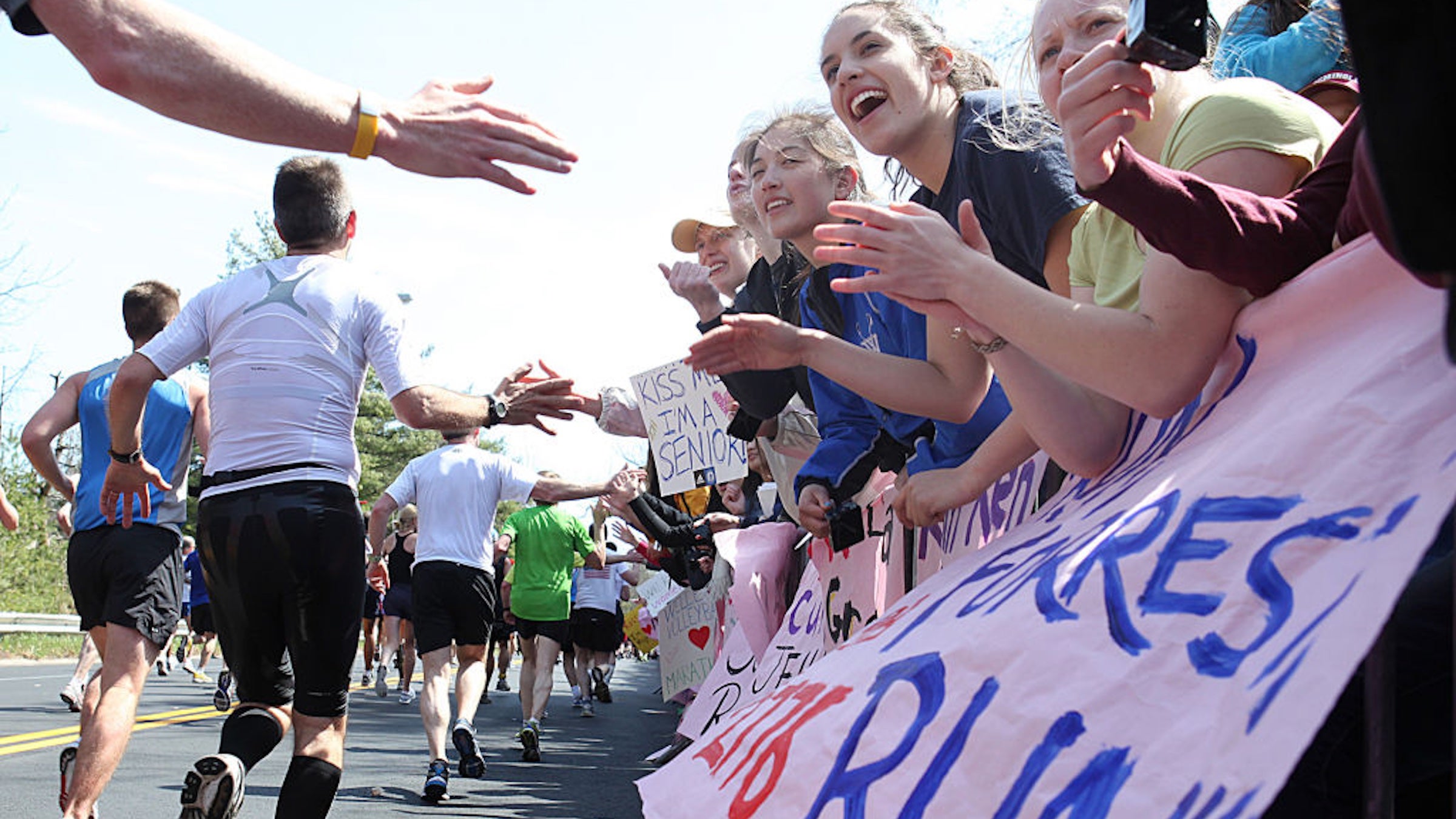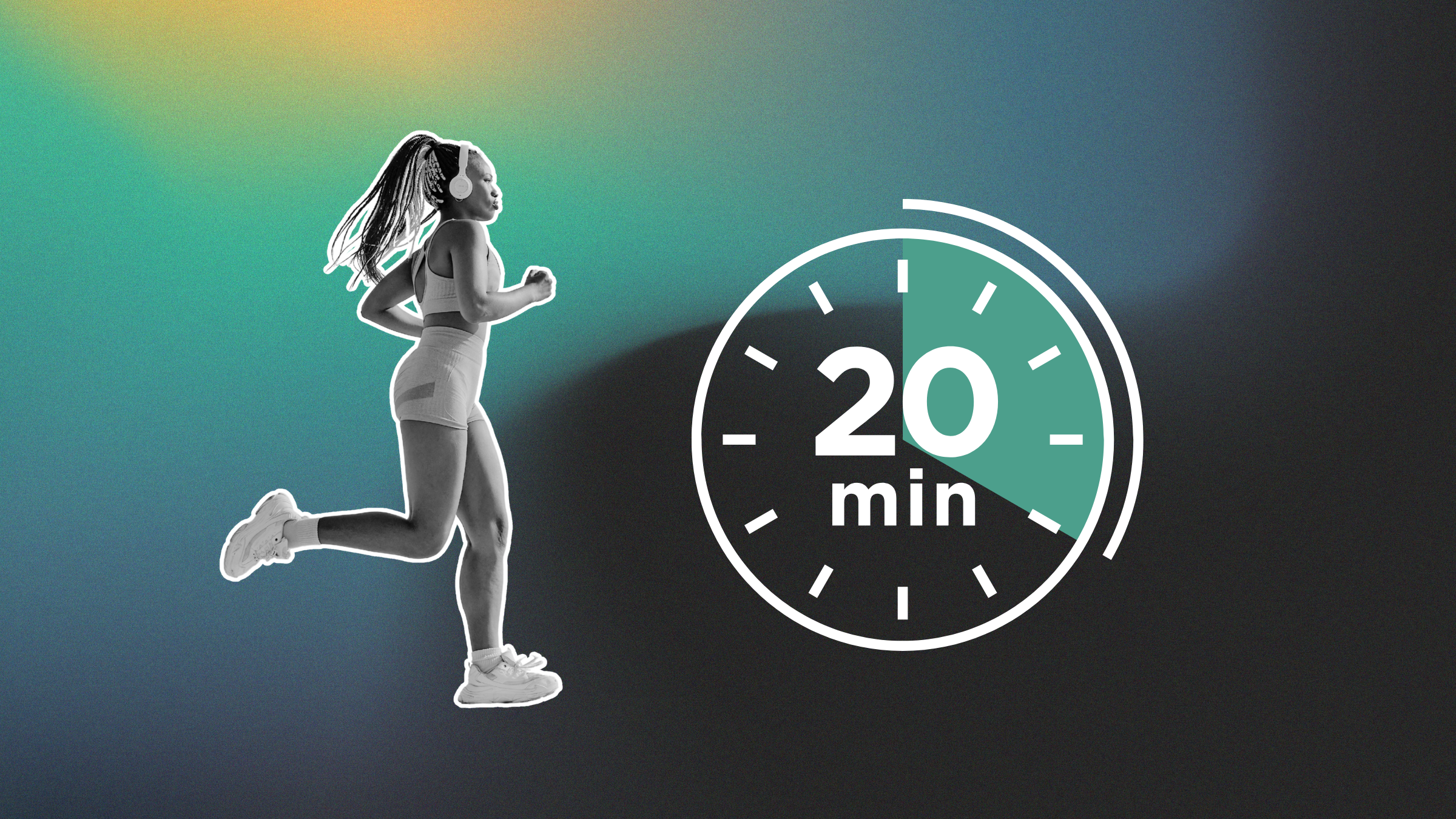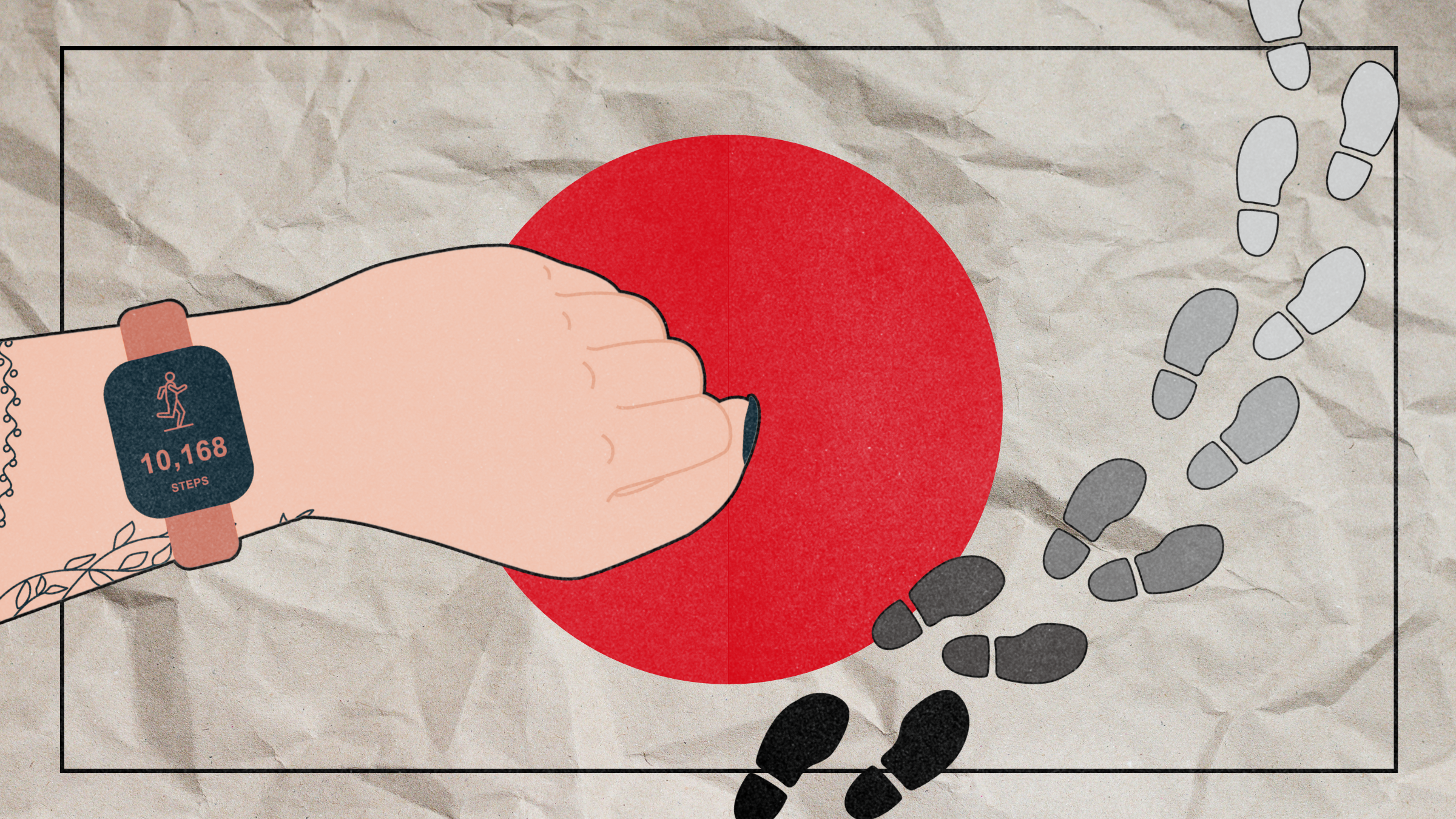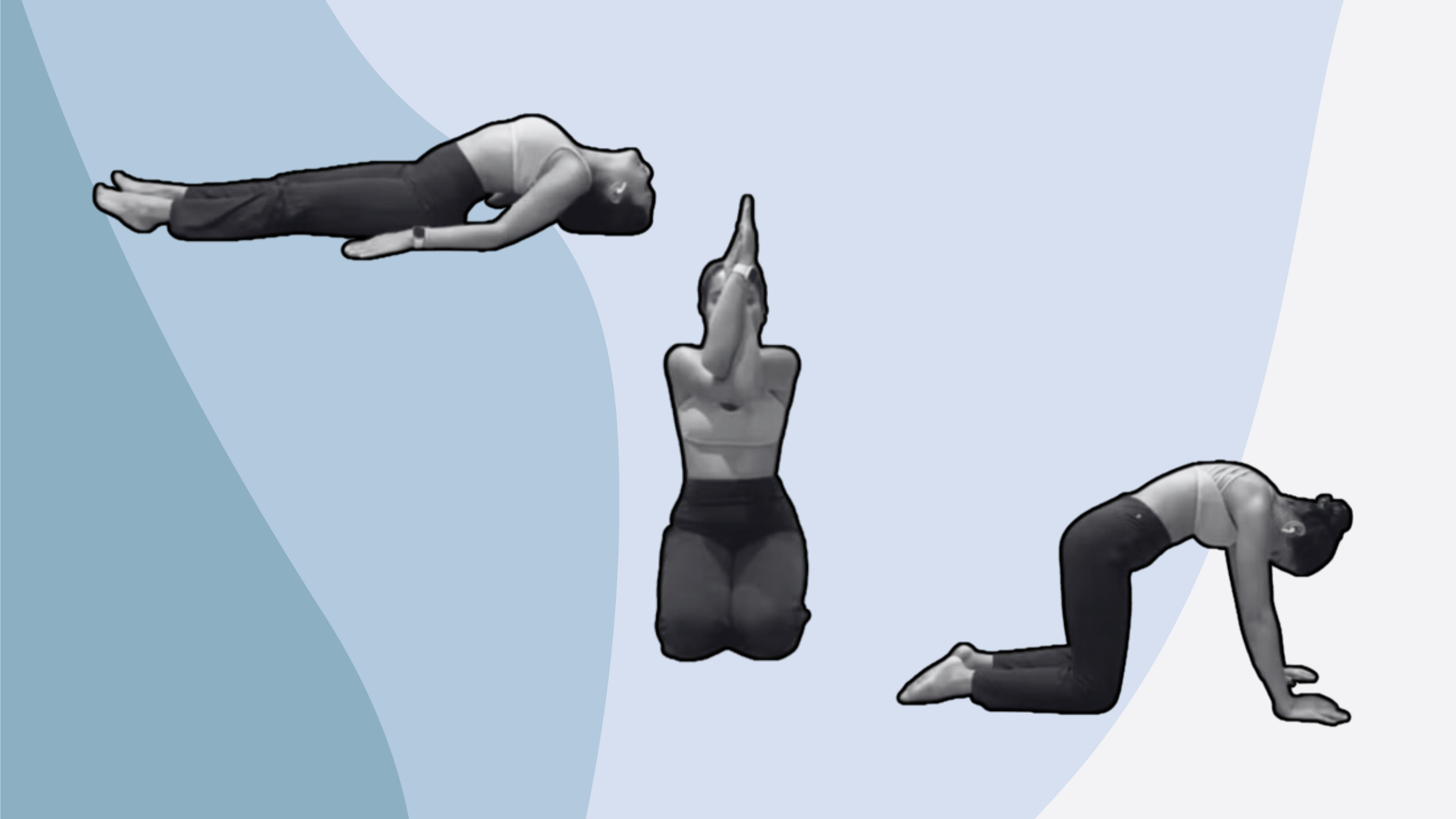Turns out there’s a science to good cheering, and most of us have been doing it wrong

Runners make their way past cheering Wellesley College students during the 115th Boston Marathon (Photo: MediaNews Group/Boston Herald/Getty Images)
Updated October 15, 2025 10:40AM
My wife is running a marathon this weekend, so I’m prepping for my vital role as cheerleader. This will involve suppressing my tendency to yell sarcastic things like “Hang in there, only 23 miles to go!” early in the race. Instead, I’d ideally like to say exactly the right things at the right times to spur her to a better performance—which is why a study in this month’s issue of the International Journal of Sports Physiology and Performance caught my attention.
Led by Sascha Ketelhut of the Institute of Sports Science in Switzerland, the study reviews the scientific literature on various ways of encouraging people to dig deeper during endurance activities: cheering, music and other noise, motivational self-talk, competition with others, and so on. The general gist is that these things all work, but the effects are variable, personal, and context-specific. One person’s psych-up song is another’s annoying earworm.
The Optimal Cheering Protocol
Despite the variability, there’s robust evidence that—on average, at least—cheering really does help most people push harder. One of the key cheering studies was published last year by a group led by Dutch scientist Bas Van Hooren, a 1:02:04 half-marathoner who knows a few things about pushing hard. They found that subjects scored 4.1 percent higher on a VO2 max test when they were cheered on than when they completed the test in silence.
The basic idea, Ketelhut and his colleagues explain, is to divert the runner’s attention from the physical discomfort they’re experiencing. It’s the equivalent of pinching yourself when you stub your toe: your brain can’t take in everything at once, so focusing on what someone is yelling at you displaces some of the negative thoughts that might otherwise tempt you to slow down. Of course, some cheering has more complex effects, which we’ll get into below.
The cheering protocol Van Hooren used was carefully designed based on previous cheering research. They started out cheering every 60 seconds, increased to every 20 seconds as the runners got more fatigued, and then began cheering continuously, accompanied by clapping, when the runners were in the final stages of fatigue. They also gradually ramped up the volume from 50 to 70 decibels, and used a collection of phrases—“Way to go!,” “Good job!,” “Push it!”—that had been rated helpful in previous studies.
This is a good protocol to use when you’re in a lab cheering on someone who’s doing a VO2 max test on a treadmill. It’s not so good on the sidelines of a marathon, where you don’t have the option of cheering every 20 seconds (and would presumably drive the runners nuts if you cycled alongside them yelling for the whole race).
Cheering in Real Life
In 2022, sports psychologists Sophie Gibbs-Nicholls, Alister McCormick, and Melissa Coyle published a paper in (appropriately enough) The Sports Psychologist describing their work with “psyching teams” at Plymouth Marjon University in Britain. These teams of sports psychology faculty and students offered public workshops leading up to 10K and half-marathon races, and then showed up at the races to cheer on the participants in an evidence-based manner.
The researchers then interviewed runners to understand what types of cheering had seemed helpful or unhelpful. The most helpful cheering tended to be either instructional (how far to the finish, reminders about good running form) or motivational (praise, encouragement). Unhelpful cheering included misleading information about the course and remaining distance, criticism, and exhortations to dig deep when the runner already felt they were digging as deep as possible.
Gibbs-Nicholls and her colleagues synthesized their insights into a handy acronym—“IMPACT”—that’s worth unpacking. Here’s their advice for how to cheer:
Instructional
Provide useful information about the course or competition. How far until the next water stop? How far ahead or behind is your rival?
Motivational
Offer praise for their participation or effort. It can be as simple as “Great effort!”
Personalized
Make eye contact, and if possible, use names or other personal info like a team name on a singlet. This creates a two-way relationship: “It’s almost kind of like a social obligation to carry on,” one of the runners reported.
Authentic
Say things that you really mean. People can tell if you’re lying (“You can catch that guy who’s way up there in the distance, almost out of sight!”) or mouthing empty platitudes.
Confidence-Building
Try to build their “self-efficacy,” which is psych jargon for belief in their own ability to complete tasks or achieve goals. Reiterate how well they’re already doing, and express your belief that they can keep pushing. This self-belief is the master-switch that determines whether they will speed up, maintain pace, or slow down.
Tailored to the Distance
OK, I think they mainly needed this one to ensure that the acronym spells a word, but the point is to give accurate (“Less than two miles to go!”) rather than generic (“You’re almost there!”) information.
There are other subtleties to consider. Experienced runners, for example, seem to get a smaller boost than novices, and probably benefit from more detailed and technical feedback. There are also psychological differences, with some research suggesting that hard-driving type A personalities don’t benefit as much from cheering. And in most studies, there’s a small subset of subjects who either don’t benefit or even perform worse, perhaps because they find the cheering distracting or annoying. But overall, the IMPACT framework seems like a good starting point—and hopefully it will keep me out of the doghouse this weekend.
For more Sweat Science, join me on Threads and Facebook, sign up for the email newsletter, and check out my new book The Explorer’s Gene: Why We Seek Big Challenges, New Flavors, and the Blank Spots on the Map.
Source link









